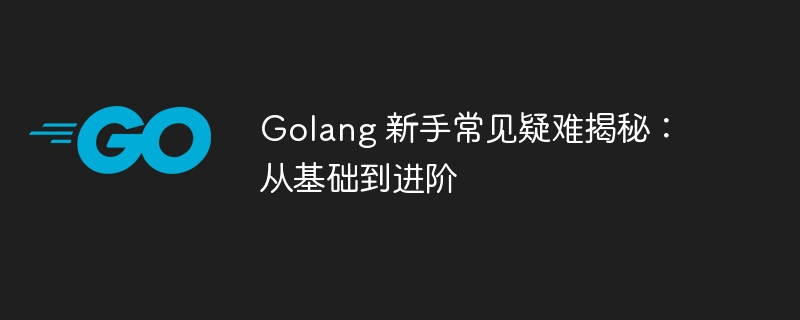
To address common Golang problems faced by novices, this article provides the following solutions: data type conversion uses type(expression) syntax. Pointer operations use the & and * operators to modify the value of the pointed variable. Closures allow inner functions to access outer function scope variables. Goroutine implements concurrency and improves performance. An interface defines a set of methods that must be implemented by types that implement the interface.

Preface
As a Golang novice , it is inevitable to encounter various difficult and complicated diseases in the process of learning and practice. This article will provide a detailed analysis of these difficult issues to help novices get started with Golang quickly.
1. Data type conversion
Data type conversion in Golang is mainly performed through the following syntax:
var variableType = type(expression)
Difficult cases:Convert int type to float64 type
var intVar = 10 var floatVar = float64(intVar) fmt.Println(floatVar) // 输出:10.000000
2. Understanding and using pointers
A pointer is a variable pointing to another memory address, and the pointer can be modified through the pointer variable value.
var num = 10 var ptr *int = &num // & 取地址,* 取值 *ptr = 20 // 修改所指向的变量值 fmt.Println(num) // 输出:20
3. Understanding and application of closures
A closure refers to a function inside a function, which can access variables in the scope of the external function, even if the external The function has returned.
Practical case:
func outer() int {
num := 10
inner := func() int {
return num + 1
}
return inner()
}
num := outer()
fmt.Println(num) // 输出:114. Usage of Goroutine
Goroutine is lightweight and lightweight in Go language Level threads can execute multiple tasks concurrently to improve program performance.
func sum(numbers []int) <-chan int {
ch := make(chan int)
go func() {
sum := 0
for _, n := range numbers {
sum += n
}
ch <- sum
}()
return ch
}
func main() {
numbers := []int{1, 2, 3, 4, 5}
result := <-sum(numbers)
fmt.Println(result) // 输出:15
}5. Understanding and implementing interfaces
The interface defines a set of methods, and the type that implements the interface must implement these methods.
Practical case:
type Shape interface {
Area() float64
Perimeter() float64
}
type Rectangle struct {
Width float64
Height float64
}
func (r Rectangle) Area() float64 {
return r.Width * r.Height
}
func (r Rectangle) Perimeter() float64 {
return 2 * (r.Width + r.Height)
}
rect := Rectangle{10, 5}
fmt.Println(rect.Area()) // 输出:50
fmt.Println(rect.Perimeter()) // 输出:30The above is the detailed content of Golang newbies' common problems revealed: from basics to advanced. For more information, please follow other related articles on the PHP Chinese website!




